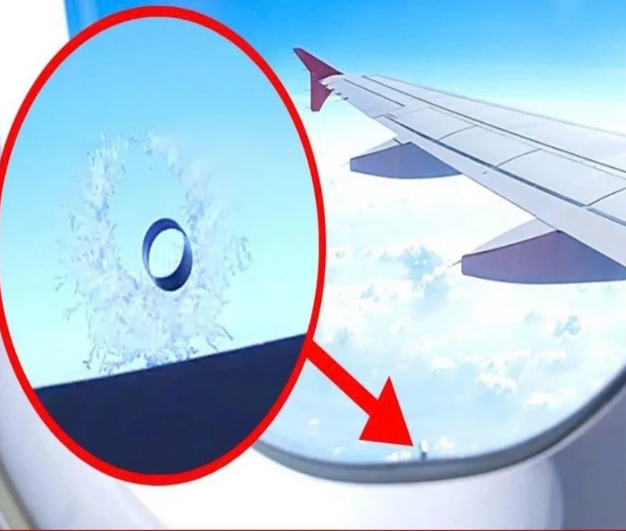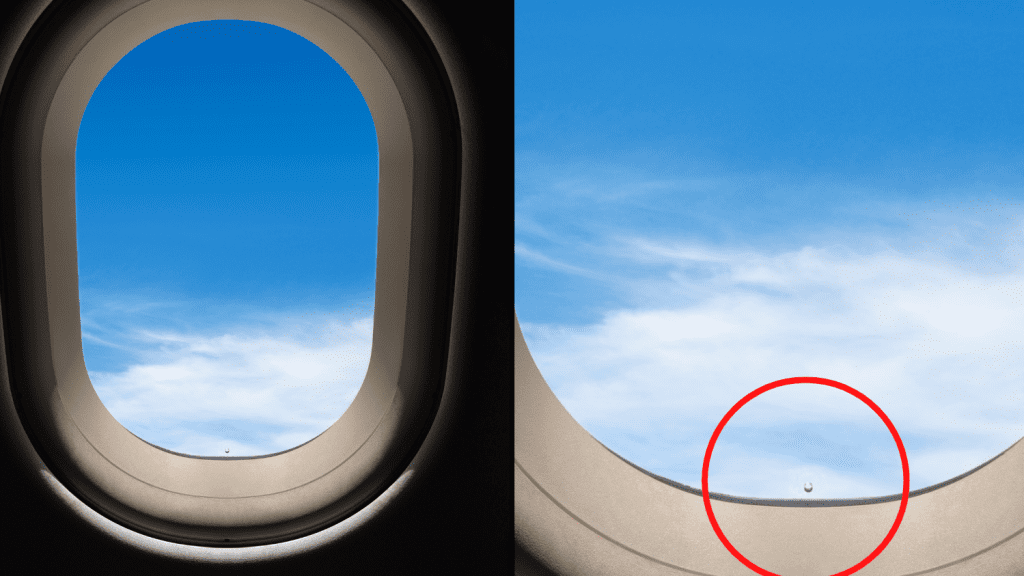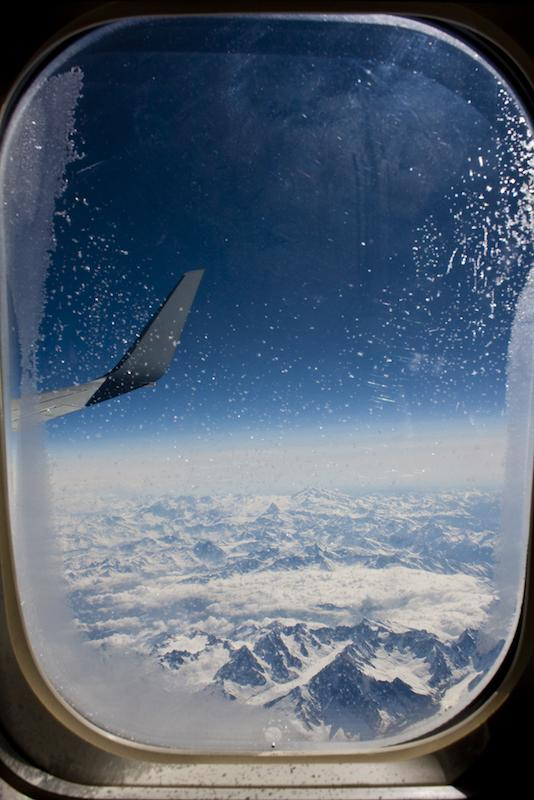If you’ve flown often, chances are you’ve gazed out of the airplane window, perhaps even marveling at the beauty of the clouds or the vast landscapes below. But have you ever noticed the small hole at the bottom of the window? It’s easy to miss, yet this little feature plays a crucial role in keeping you safe and comfortable during your flight. So, what exactly is this tiny hole for, and why is it so important? Let’s break it down.
Why Airplane Windows Have Holes

That small hole you see at the bottom of airplane windows is called a “bleed hole”, and while it may seem insignificant, it’s a vital part of the aircraft’s design. The primary function of this hole is to regulate the difference in pressure between the inside of the cabin and the outside atmosphere. When a plane ascends to high altitudes, the air pressure outside the plane drops significantly. If you were to suddenly lose cabin pressure, things could become dangerous very quickly.
The bleed hole ensures that the window panes can handle the stress created by this pressure difference, protecting passengers from potential harm. The pressure is taken on mostly by the outermost pane of the window, with the middle pane serving as a backup. The inner pane—the one closest to passengers—is primarily there to protect the structural integrity of the other two.
How Airplane Windows Are Designed
An airplane window is not a single piece of glass but consists of three separate layers: the outer, middle, and inner panes. Each layer plays a different role, and together, they ensure safety and comfort.
- Outer Pane: This is the most crucial layer of the window. It bears the brunt of the pressure difference between the cabin and the outside air, especially when flying at high altitudes. The outer pane is designed to withstand extreme forces, ensuring that passengers remain safe even in the rare case of a window failure.
- Middle Pane: Acting as a fail-safe, the middle pane is there to back up the outer pane. If the outer pane were to somehow crack or break, the middle pane would step in, preventing a catastrophic event.
- Inner Pane: This pane serves more as a protective shield, designed to prevent passengers from accidentally damaging the window by pressing on it, leaning against it, or otherwise interfering with the more fragile outer and middle panes. It also creates a barrier, ensuring that the temperature and humidity inside the cabin remain comfortable.
The bleed hole, located in the middle pane, helps to balance the pressure between the cabin and the space between the middle and outer panes. This pressure regulation keeps the outer pane from being overloaded and allows it to handle the majority of the force exerted on it.
Balancing Cabin Pressure with the Bleed Hole
When an airplane takes off and climbs to cruising altitude, the air pressure outside the plane decreases drastically compared to the pressure inside the cabin. Without some form of pressure regulation, the difference could be harmful, especially to the windows. This is where the bleed hole comes in. By allowing the air pressure to equalize between the cabin and the gap between the middle and outer panes, the bleed hole ensures that the outer pane takes on the majority of the pressure.

Because of this feature, airplane windows can withstand the extreme pressure differences at high altitudes without cracking or breaking. It’s an ingenious solution to a potentially dangerous problem.
Preventing Fogging with the Bleed Hole
In addition to balancing air pressure, the bleed hole plays a secondary but equally important role: it prevents the windows from fogging up. When moisture builds up inside the cabin, it could potentially condense on the windows, obstructing your view and reducing visibility for passengers.
The tiny hole allows moisture to escape, ensuring that the window remains clear throughout the flight. This not only enhances comfort but also contributes to safety, as clear windows are essential for both passengers and crew members.
Why Airplane Windows Are Circular, Not Square

You may have noticed that airplane windows are always round or oval-shaped. This design choice is not just for aesthetics; it’s directly related to safety. In earlier aircraft designs, square windows were common. However, it was discovered that square windows have weak points at the corners, making them more likely to crack or break under high pressure.
Round or oval windows, on the other hand, distribute the pressure more evenly across the surface, reducing the risk of structural failure. The combination of the circular window design and the use of a bleed hole makes airplane windows incredibly resilient, even in the most challenging conditions.
The Role of the Inner Pane
While the outer and middle panes deal with the pressure difference, the inner pane has a much simpler job. It doesn’t bear any pressure, but it’s there to prevent passengers from causing accidental damage to the window. Imagine pressing your hand against the window or leaning against it for an extended period—over time, that kind of interaction could potentially damage the more delicate outer and middle panes.
The inner pane protects these vital layers, ensuring that the window structure remains intact and performs its essential functions. So next time you fly, feel free to lean against the window without worry—the inner pane has you covered.

A Tiny Design Feature with a Big Impact
It’s fascinating how something as small as a bleed hole can have such a significant impact on safety and comfort during air travel. This tiny hole helps regulate air pressure, prevents fogging, and ensures the longevity of airplane windows. It’s one of those design details that most passengers don’t notice, yet it plays an indispensable role in the overall experience of flying.
Conclusion: Next Time You Fly, Look Closely
Next time you’re on a flight, take a moment to appreciate the ingenuity behind the design of airplane windows. The bleed hole might seem like a minor feature, but it’s essential to your safety and comfort at 35,000 feet. From balancing pressure to keeping the window clear of fog, this tiny hole is a marvel of engineering. Airplane design is full of these small but critical details—often unnoticed but always working to keep you safe in the skies.


